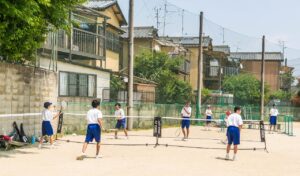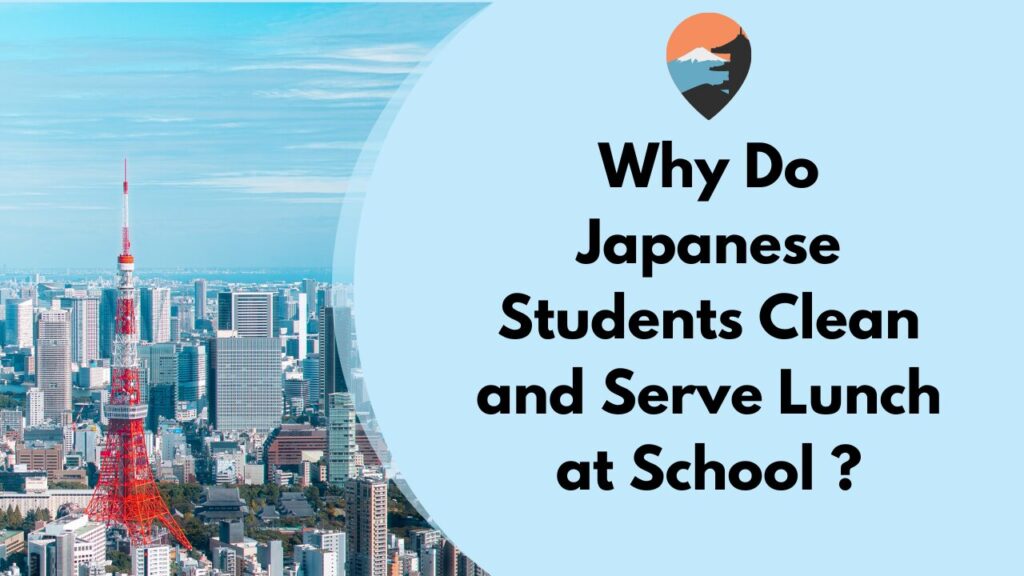The Japanese educational system has unique characteristics compared to many other countries. For instance, school lunches, student promotion, cleaning, club activities, and group behavior are some of the interesting elements of Japanese school education. These elements are closely tied to Japanese society and culture, providing an education that is unique and diverse. In this article, we will explore the characteristics of Japanese-style education and clarify what this means.
1. School Lunch
In Japan, it is common to have high quality school lunch, especially in elementary schools and junior high schools. From a global perspective, it is very rare for schools provide meals that are as well balanced in nutrition and thoughtfully planned by a dietitian. In Japan, school lunches are not just for satisfying hunger. Some schools use vegetables or grains which students have grown to make school lunch from an educational perspective.
What students learn through school lunch
・Eating manners
This is possible since students have their school lunch in their own classrooms with teachers. Some teachers guide students how to eat properly in public and monitor them to ensure that they don’t play with food or stand while eating.
・Healthy eating habits
As mentioned above, Japanese school lunches are well-balanced, since nutritionists consider the meal and recipe. Students are able to enjoy nutritious and tasty meals at school.
・Food culture of Japan and its regions
Since we have many traditional and famous meals in each area, school lunches also differ from place to place in Japan. For example, a town called Ujitawara-town in Kyoto is famous for Japanese green tea. So, in their area’s school lunch they use Japanese green tea in rice and soup. Moreover, in Hokkaido they sometimes serve Jingisukan(it is similar to lamb meat) as school lunch.
According to the Ministry of Agriculture, Forestry and Fisheries, they decided to serve traditional and famous meals in each area as school lunch, because they would be opportunities for children to learn more about their regions’ culture and tradition.
・Food education
Some schools in Japan use vegetables or rice that students grew and harvested as an event. For instance, a school in Shizuoka Prefecture helped farmers to crop their harvests and use them as school lunch. This is said to be one of the solutions for environmental problems, since food will be consumed in one place and will eventually reduce food wastage. A school reported that this event made students enjoy learning food education and realize the importance of food. Through school lunch, students can learn and develop interest in food education and various issues related to food.
・Respect for workers
Until junior high school, many schools buy school lunch or create rooms that make school lunch for students. Some schools have tried students to observe and experience making school lunch in order to let them learn how their meals are made, and have appreciation for people who cook for them almost every day. For example, a school in Ibaraki Prefecture went to the place that makes school lunch and students observed how they work and experienced cooking school lunch. Teachers wanted students to understand that many people put efforts for preparing the food they eat, such as farmers, delivery companies and nutritionists. Through this experience, they were able to realize that they should appreciate all the people who are involved in making their meals.
2. Cleaning Time

In Japan, there is always a “cleaning time”. Japanese students clean not only their classrooms but also corridors and even toilets by themselves. This normally does not exist in other countries as cleaning crews are hired and generally clean up after children leave school.
Meaning of Cleaning time in school
In schools in Japan, cleaning is regarded as a part of education for students. According to the government course guidelines , it aims at students to learn how to clean things around them and utilize it in their daily lives. They also mentioned that it grows students’ benevolence and responsibilities. Since teachers usually form groups of 5~6 students to clean places in school, it is effective for them to understand their roles in class. Moreover, generally many people think that through cleaning time, students will be able to develop an awareness of the importance of taking good care of their belongings. By cleaning things around them, they would form a habit to keep everything clean, even at the schools they attend as well as the public places. In addition to this, it aims to promote the prolonged use of desks, chairs and classrooms, and encourages to think about people who will use these facilities after they finish using them and graduate. These children eventually become more conscious of keeping public areas clean. Some people also say that cleaning time will be an opportunity to focus on themselves and they can stay calm. It would be beneficial for students’ mindfulness as well.
Many students in schools overseas, where there are cleaners, may think that there is someone else to clean it up and may not pick up scraps even if it is all over the floors or stairs. In order to change their mindset and to make them more responsible, some schools in other countries are introducing Japanese-style cleaning time.
3. Child Advancement

In Japan, basically, students automatically advance to the next grade no matter how few days of attendance they have or how poor their grades are. This is very different from Western countries where students with low grades are not automatically promoted.
On the other hand, there is no grade-skipping system. The characteristics of this system are based on the policy that no one should be left out. However, if they did not perform well in school, it is hard for them to learn in higher education institutions and get better jobs.
4. Club Activities

In Japan, there are club activities in elementary schools as well as in junior high and high schools. It is common to have clubs for sports, music and arts. For example, basketball, soccer and tennis are very popular among sports clubs. Moreover, most schools have brass band clubs and art clubs, especially brass band clubs are quite popular among all.
Purpose of Club Activities in Japan
The ministry of Education stated the purpose of club activities, that by positively participating in club activities students will be able to acquire responsibilities, how to cooperate in teams and better relations with fellows and teachers. They consider that experiencing difficulties and acquiring these abilities connect to their motivation to study and better academic performance.
There are students who take club activities quite seriously and practice strictly since they aim for better results in the tournaments. However, there are also many students who decide to join clubs because it is a great opportunity to make friends and have connections with students who are in different grades.
In club activities, the objective is not simply to play sports or the music instruments and exercise the body. Through competitions and regular practices, students will be able to learn how to interact with society, and the importance of working hard as a team.
5. Cooperation and Punctuality

One of the characteristics of Japanese schools is putting value on cooperation and punctuality. It reflects ideal behaviors in Japanese society.
In Japanese society, it is quite crucial to be on time and this is a part of their culture as well. For example, when a train is late for just 5 minutes, an announcement is made apologizing for being late. Moreover, when people are late for work or appointments even for a minute, they call and inform their colleagues and clients that they will be 1 minute late. From these examples, we can see that Japanese students are taught to be on time and value punctuality in all walks of life.
Many Japanese people believe that these customs are necessary in order to work as a team and build relationships in society. However, there is also a concern that too much emphasis on group behavior may lead to a lack of individuality or difficulty in acting alone. It is a difficult balance to strike, but in compulsory education, these are considered to be important acts.
Summary

Japanese education is characterized by many features such as school lunches, cleaning time, child advancement, club activities, and group behaviors. These elements are deeply connected to Japanese society and culture such as being on time, keeping public places clean and learning how to cooperate with others.
Last Updated on 2024-05-21





